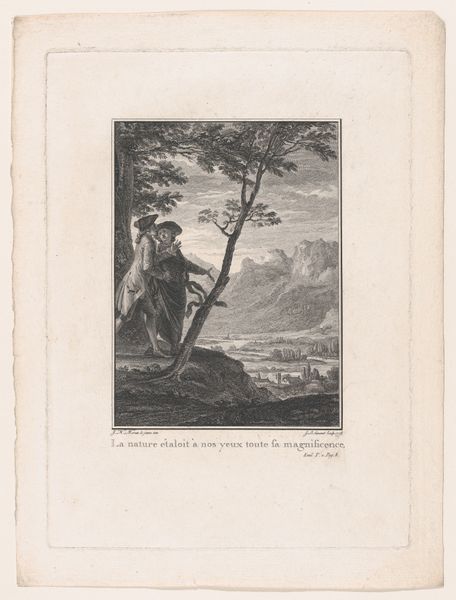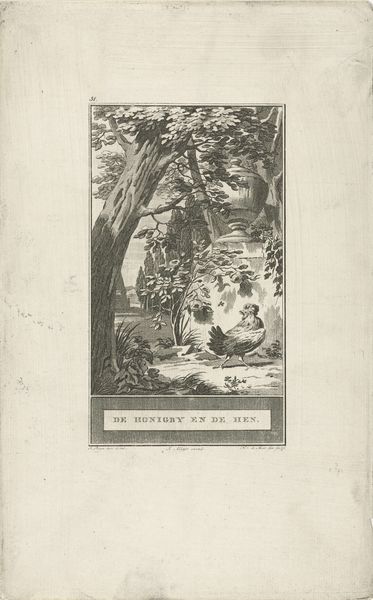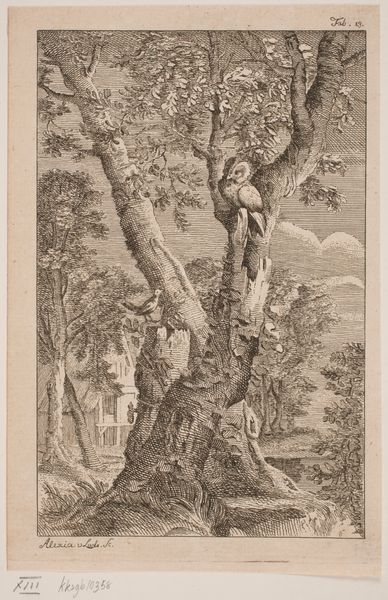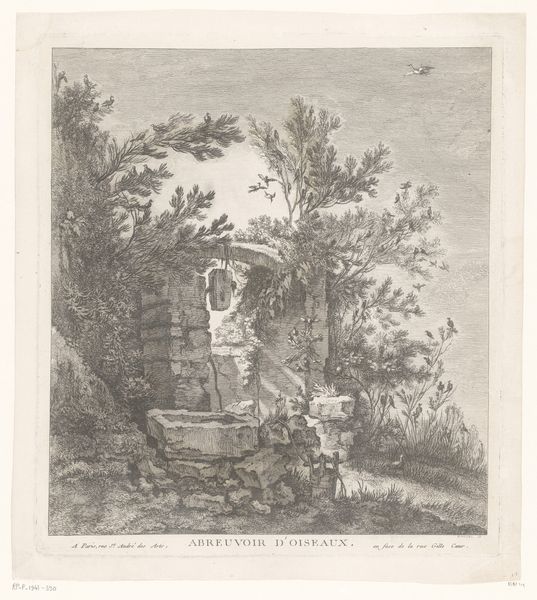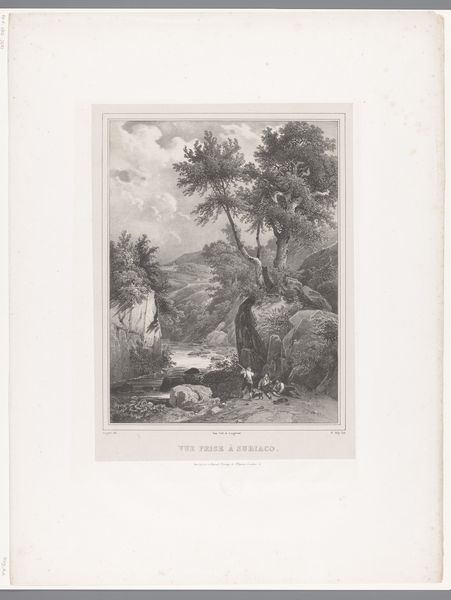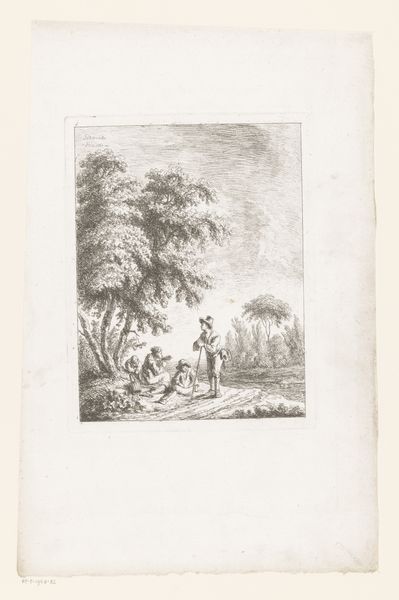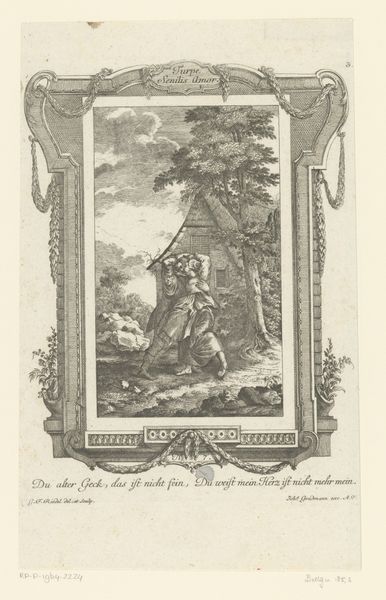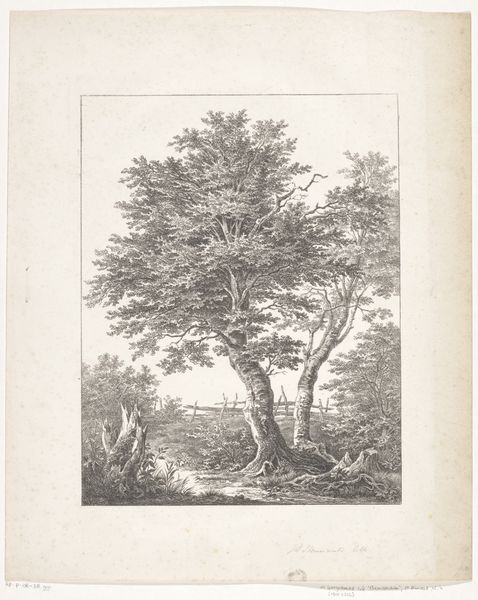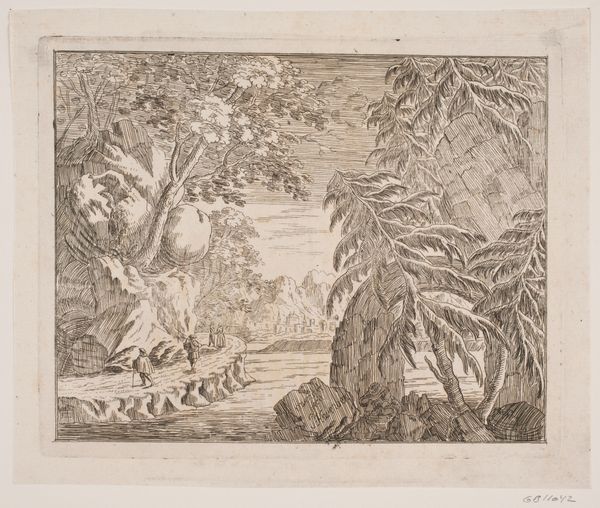
drawing, print, etching, engraving
#
drawing
#
narrative-art
#
ink painting
# print
#
etching
#
landscape
#
figuration
#
line
#
engraving
Dimensions: 12 x 8 7/8 in. (30.48 x 22.54 cm) (plate)16 5/8 x 10 15/16 in. (42.23 x 27.78 cm) (sheet)
Copyright: Public Domain
Curator: Let’s take a look at "The Dragon of Many Tails," a print created around 1753 to 1755, currently held here at the Minneapolis Institute of Art. The work is an etching or engraving, and its creator is, regrettably, anonymous. Editor: It’s oddly… whimsical, isn't it? This isn’t the fearsome, fire-breathing beast of legend. He looks a bit cross-eyed and grumpy, almost like he’s been woken up from a nap. I like how the trees around him are both protective and imprisoning. Curator: Indeed. Though rendered anonymously, the print draws heavily from the stylistic and thematic concerns common in European illustration during the mid-18th century. The narrative setting, with the dragon nestled amidst trees, places the figure within a broader intellectual and aesthetic framework influenced by the Enlightenment. Editor: Narrative-art, hmm... The forest gives him this wonderful theatrical backdrop, doesn't it? The engraver or etcher, who remains unknown, managed to balance the grotesque and the charming beautifully. I imagine this dragon more as a character in a very dryly funny fairy tale. Curator: It’s fascinating to think about how the piece, and others like it, circulated within print culture at the time. The fine lines achieved through the etching and engraving techniques allowed for a wide distribution, creating a shared visual culture among diverse audiences. Editor: It does make you wonder about that initial audience! If this dragon met viewers who saw him as powerful and fearsome, how far removed was their interpretation? I see something rather comical and benign in his figure... Is it subversion, ineptitude, or just a peculiar type of invention? Curator: Those are wonderful questions. Certainly, the social functions of displaying such pieces extend to a broader consideration of what images were made available to a curious public, and what interpretations might be enabled as they became ingrained. Editor: Well, whatever its place in visual culture, this particular dragon feels very, very gentle for an allegedly scary beast. It sort of invites you into its world... I like this curmudgeonly dragon. Curator: I agree. The piece prompts valuable insight on historical printmaking, artistic reception, and of course the ever-evolving imagery surrounding mythological subjects. Editor: Agreed! Here's to more grumpy dragons in art history.
Comments
minneapolisinstituteofart almost 2 years ago
⋮
When a guard boasted to a visiting envoy that his prince ruled over men who kept armies at their own expense, the envoy replied with an account of being attacked by a fearsome many-headed dragon only to see the beast rendered powerless as it became entangled in the woods. He went on to say that another dragon soon arrived, now with one head and many tales. This dragon could swiftly navigate the hedge-head, body, and tails an unstoppable wedge. The envoy commented to the boastful guard that the first dragon was the prince's force, and the second one, the envoy's.
Join the conversation
Join millions of artists and users on Artera today and experience the ultimate creative platform.

